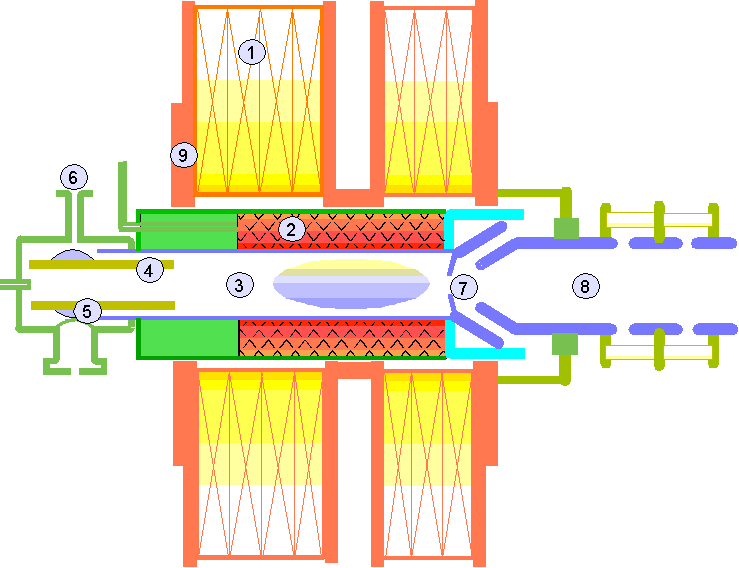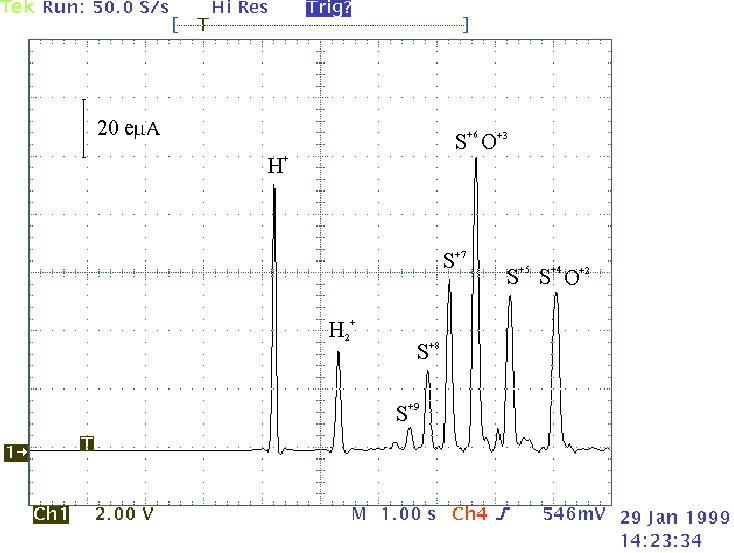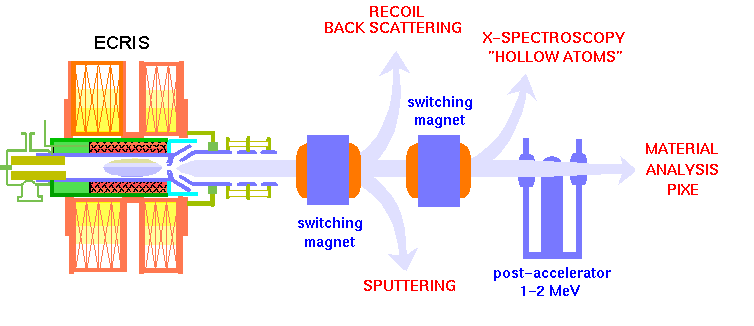

















ECRIS - Electron Cyclotron Resonance Ion SourceTo obtain relevant ion beams for the cyclotron a small 10 GHz ECR ion source (Fig.1) has been built at HIL. ECR discharge takes place in the stainless steel chamber, 50 mm inner diameter, 250 mm long. This chamber is an extension of a coaxial line, feeding RF to the plasma, similarly to the Nanogan. The magnetic confinement of the plasma in radial direction is obtained by the hexapol surrounding the chamber. This hexapol consists of 12 segments made of NdFeB permanent magnets. Trough the 1 mm gap between the hexapol and the chamber tube a cooling oil is pumped. The axial magnetic field is created by 8 water cooled coils. Each two coils are supplied with a current from separate power supply. This configuration allows to obtain relevant magnetic profile, tuned for the maximum of the beam current. The combination of the criogenic and turbomolecular pump provides the vacuum of about 5x10^8 in the beam area. 
Fig. 1. Schematic view of the ECR ion source. 1. coils 2. hexapol 3. plasma chamber 4. coaxial line 5. tuner 6. RF injection 7. exit hole 8. Einzel lens 9. yoke.

Fig.2. Example of the charge state distribution: sulfur optimized for S+7.
Fig.3. Examples of the ECR ion source possible applications (in red). The Warsaw ECR source has been built under general supervision of Dr Krzysztof Sudlitz (k.sudlitz@inetia.pl).
|



